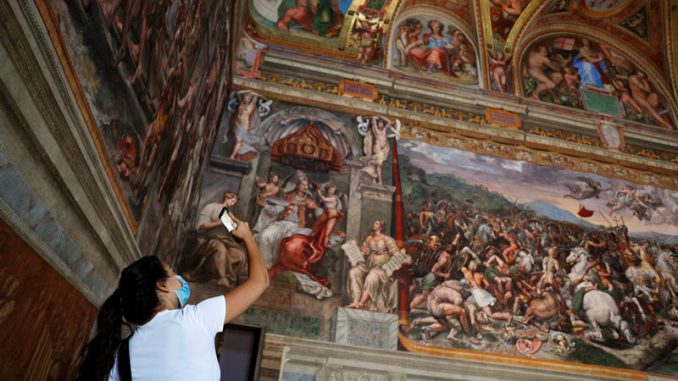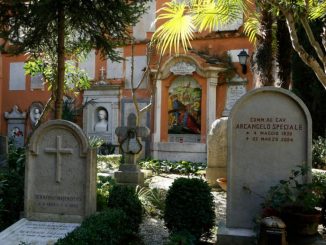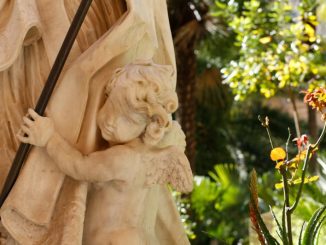
VATICAN CITY—As COVID-19-related deaths in Italy reached their highest daily level since early May and Italy began enacting new restrictions to slow the spread, the Vatican decided it will once again close its museums to the public.
The Vatican Museums, the necropolis tours and the museum of the pontifical villas at Castel Gandolfo, south of Rome, will be closed to the public Nov. 5-Dec. 3 “as a precautionary measure,” a Vatican communique said Nov. 4.
Pope Francis’ weekly general audience also returned to being livestreamed from the library of the Apostolic Palace Nov. 4 after taking place with the public present since Sept. 2.
Someone attending the general audience Oct. 21 tested positive for COVID-19, and the Vatican announced that beginning Nov. 4, the audiences would be livestreamed without visitors present to prevent “any possible future risks to the health of the participants.”
The announcement came the same day the Italian government announced new restrictions. Health authorities registered a total of 28,244 new cases of COVID-19 on Nov. 3 and 353 COVID-related deaths in the previous 24 hours.
From Nov. 5 to Dec. 3, there will be a nationwide curfew from 10 p.m. to 5 a.m., and the country’s regions will be classified into red, orange and yellow zones based on data including infection rates and availability of hospital beds.
Red zones will see some form of lockdown with a stop to nonessential movement and many public activities.
Masks already were mandatory outdoors and in public buildings; gyms and theaters had already been closed across Italy; cafes and restaurants have been required to close at 6 p.m.; and people were strongly advised to not have more than six visitors in their homes.
By Carol Glatz



